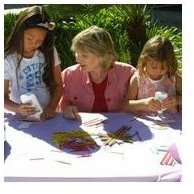Middle School Ecology Project: Webquest About Urban and Rural Environments
The Goal
This activity will encourage students to learn about their own environment and the impact they have on it. Students will work together in groups
to study urban and rural environments. Each group will create a presentation to show the students’ understanding of how their assigned environment is impacted by business, industry and personal choices. Each group will present its findings to the class.
Task
Divide students into groups of three or four students and assign each group a specific type of environment, urban or rural. Choose a specific city for each urban group and a specific state for each rural group. Choose cities and states that have different types of environments, such as the Arizona desert, the Colorado mountains, the Minnesota prairie and the Louisiana swamp. After each group completes its background reading the students will create a presentation on their findings for the class.
Process
Students should use the Internet to answer a few general questions on ecology and conservation in order to gain a basic understanding. Each group will also answer questions specific to their assigned environment. They should create a presentation for the class that shows the answers to their set of questions and highlights an understanding of how their assigned environment is affected by people.
Individual Student Research
Students can type the following phrases into a search engine if they need help with definitions.
- Define: ecology
- Define: conservation
- Define: invasive species
- Native plants: city name
- Native animals: City name or state name
Helpful Websites and Searches:
- Conservation.org
- USGS.gov, Water Science School
- US Energy Information System, FAQ
- State of Minnesota Board of Water
General Questions
These are the questions your students will seek to answer:
- Define ecology.
- Define conservation.
- Name three plants native to your area.
- Name three animals native to your area.
- Name three plants frequently used for landscaping that are not native to your area.
- How much water does the average person use each day in America?
- How much electricity does a household use each day in America?
- What are two ways a residential home can use renewable/alternative energy?
- How can you reduce your personal use of water?
- How can you reduce your personal use of electricity?
- What is an invasive species?
- Name one way an invasive species of plants or animals is introduced to an environment.
Urban Ecology
You will teach that If ecology is the study of the environment as it relates to living organisms and conservation is concerned with the prevention of injury, decay, waste or loss, then understanding the environment we live in is the first step to improving it. An urban environment has specific conservation difficulties due to the number of people who live together in a small area. Have your students answer the following questions to better understand this type of environment.
- New York is the largest city in the United States according to the 2010 census. How many people live there?
- Where do the people who live in New York get their water?
- Where do New York natives get their food?
- What does New York do with garbage?
- Is there a recycling program in New York City? What types of items are picked up from residents?
- How do businesses dispose of hazardous wastes such as fluorescent light bulbs in New York?
- What is the air quality like in New York City?
- How is electricity generated in New York City?
- What alternative methods of generating electricity are available?
Rural Ecology
Rural ecology has its own challenges. Large farms use chemicals for growing, insect control and weed control. Soil conservation and renewable energy sources are growing concerns in rural areas. Students should have an understanding of how modern rural practices affect the environment after researching the following questions.
- Where do people who live in rural Minnesota get their water?
- Where do people who live in rural Minnesota get their electricity?
- What alternative sources of energy are available to farmers?
- What do they do with garbage?
- Is there a recycling program for rural Minnesota?
- What types of insecticides do farmers use?
- What types of fertilizers do farmers use?
- What methods do farmers use to prevent chemicals from seeping into groundwater?
- What modern methods of farming have evolved to help conserve soil?
- What farming techniques are used to prevent water contamination from cows/pigs and other farm animals?
Evaluation
Students are evaluated on their final presentation and how well they cooperate. The following scale of 4 points can also be used when letter grades are given:
1 – Minimal interaction in the group, presentation doesn’t answer all of the assigned questions.
2 – Average interaction in the group, presentation covers all of the assigned questions without any additional information included
3 - Average interaction in the group, presentation covers all of the assigned questions with some additional information added
4 – Average or above average interaction in the group, presentation covers all of the assigned questions with a lot of additional information.
This ecology and conservation webquest is designed to introduce students to the basics of ecology as it relates to them. Students can now make better personal choices about how they live to improve their water conservation, energy use and recycling.
